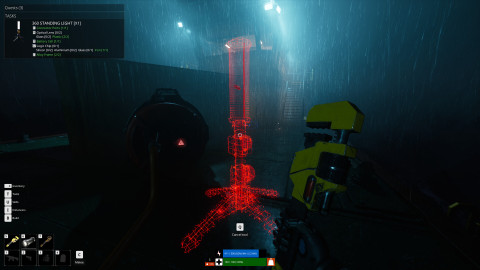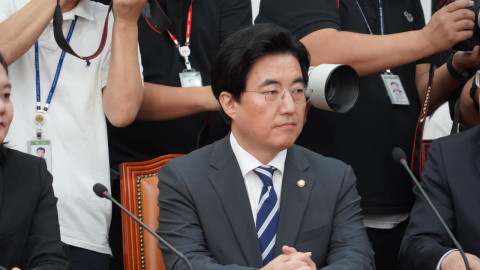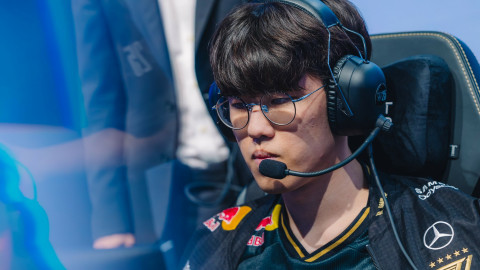
On Mar 23, the Vice President of Wemade and CEO of WEMIX, Suk-whan Kim stood on top of the GDC 2022 podium. In his lecture, he provided insight on how the WEMIX platform is utilized through the game MIR4, and how revenue is generated, based on his past four years of development process.
First, through a brief introduction on the WEMIX platform and MIR4, Kim explained why MIR4 is not just another new game on the market, and that games are more than just a form of entertainment. By applying Blockchain technology to games, he explained that they could become productive activities and create economic value through players enjoying and actively playing the game.
He then explained the token economy that forms the foundation of the MIR4 economy. By playing the game, players are able to earn ‘Darksteel’, which then can be smelt into Draco. The opposite can happen as well, with the exchange rate being determined by a formula called the Derby system. It’s a constantly changing system that reflects the lifecycle and activity level of the game.

Furthermore, players can exchange Draco for WEMIX credits and WEMIX to cash out from an external crypto exchange. As an alternative solution, they may synthesize Draco to get ‘Hydra’, and stake it to get interest. Players can also stake Draco itself for a chance to win XDraco items, which can be traded between players through a trading system called EXD [Exchange by Draco].
MIR4 also features NFT technology, where they can trade the character NFT in the NFT market, or stake them through a staking service called MIRAGE.
The WEMIX platform has been developed with a clear purpose to house all these systems. Kim recognized that blockchain is a slow and expensive technology, and it’s one of the most expressed issues of blockchain skeptics when tackling blockchain.
Ethereum, for example, TPS [Transactions Per Second] were below 10 and required tens of dollars to process a single transaction. Such circumstances was the reason why it was hard to apply blockchain to games, and it’s also why blockchain games were forced to be simple, thus not attracting much interest from gamers.

In order to solve the issue, Kim explained that WEMIX adopted a Multi-Chain structure, which not only overcame low TPS, but also secured unlimited scalability to support numerous games. A hybrid structure was also adopted, which utilized both Public and Private Chains to dramatically lower the high transaction fee, while securing reliability. The structure has three layers of hierarchy; the Public Chain being the highest, and the Private Chain being at the lowest.
The WEMIX token, which is the key currency of the WEMIX platform, is issued on the Public Chain, while the Service Chain handles the various transactions. In order for fast TPS and low fees, Private Chain is implemented. It’s designed to secure infinite scalability by adding new chains in parallel when one chain reaches its limit, with Game Tokens and NFTs being issued on the Service Chain.
The WEMIX Chain is what secures interoperability, as the interchain that connects the Public Chain and the Service Chain. In principle, Blockchain Network is essentially an isolated network, so the on-chain data is only utilized within the chain. However, the WEMIX Chain allows the assets and the data to freely be exchanged, and have various utilities. The Trade Delegator plays a very important role, and gamers can use the platform through the WEMIX Wallet.

Through the WEMIX Wallet, users can access games, trade tokens & NFTs, check their transaction history, and stake WEMIX Token. Transactions within the WEMIX platform are also supported on independent web-based services, such as DEX and NFT Market.
The biggest Tokenomics characteristic of the WEMIX Platform is the utilization of multiple game tokens. Different tokens are required based on the genre of the games and the different playerbases, so while the system makes it difficult to generate immediate revenue, preparing a platform to generate various tokens aligns with the fundamental goal of making a game fun to play.
Kim then went on to provide a detailed explanation with examples on the development philosophy behind Blockchain games & technology. He emphasized that the fundamental entertainment aspect of a game should always be prioritized over revenue generation and economic interoperability.
“We define P2E as playing simple and uninteresting games that are solely developed to make money. We believe enjoying fun games and making money at the same time is much more important. We’d now like to start using the term, ‘play-and-earn’, so with the games on the WEMIX platform, please call them P&E games.” After emphasizing Wemade’s philosophy behind game development, he talked briefly about the WEMIX platform services and ended his presentation.
-

-

-

Striving for perfection to achieve excellence in esports
Sort by:
Comments :0






